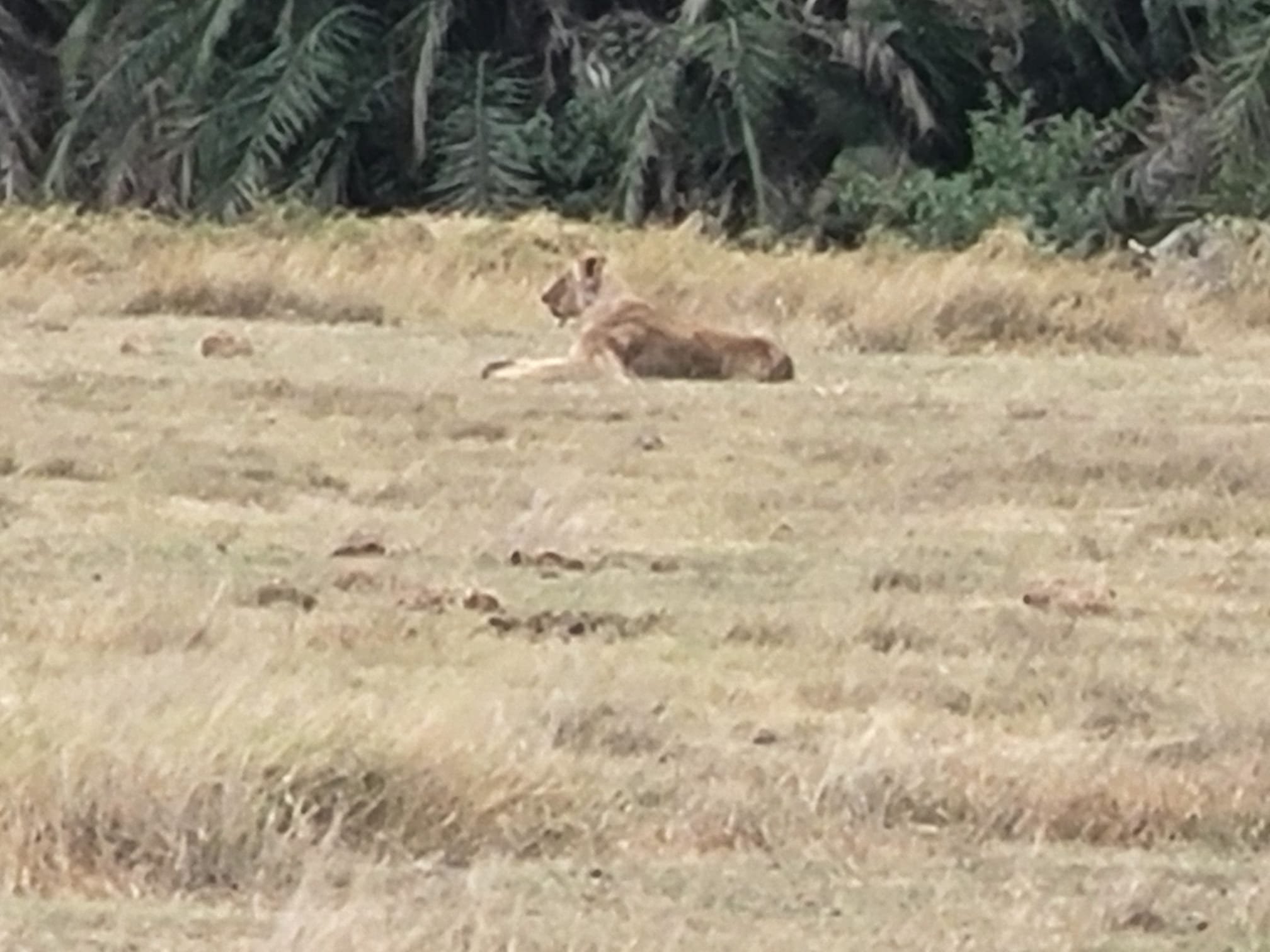Amboseli National Park
After visiting Natamuse school, we spent the night in Loitokitok. Conveniently, Amboseli National Park is right next to the town. So we took the opportunity for a day-long safari the next day. It was very hot by mid-morning, which leads many animals to seek shade and cover. So we were preparing for a boring afternoon. We’d had pretty good luck in the morning, though. We did want to see a lion, and they’d eluded us all morning.
But then storm clouds rolled in from Mt. Kilimanjaro. You can see the west flank of the mountain above. The clouds never broke, so we didn’t see the top of the mountain on this trip.
It rained briefly, as the storm clouds flew rapidly by. Afterwards it was significantly cooler and animals started coming out.
We drove down a road with no other safari trucks on it. (Claudia and I joke that we need to find a safari company called Greta Garbo Tours: “I Want to be Alone!”) After a kilometer or so, a few of us in the truck simultaneously spotted a lion coming out of the bush. We pulled up close to see it. The more we looked, the more we saw. There were 9 female or juvenile lions lying around waiting for dusk to hunt.
Thomas, our driver, got on the radio to report our find. The safari drivers all talk on the radio to keep each other apprised of what they find, so others can come. Working together helps all of them, and benefits all the tourists.
It is also fun to be the truck that first spots something. I’ve only seen a pride this big once before. No one in the park had seen lions all day until we spotted them. (Right place, right time. It isn’t like we have superpowers.)
Unfortunately they were a ways away. I tried to get them to line up for a group shot. But they just wouldn’t listen. (Herding cats on steroids.) So the next six shots show all nine.
Below are a couple cheetahs we saw in the morning. There is one standing and the back of another’s head to the right of that one. There were at least four of them total in the bushes. And they were farther away than the lions.
A good pair of binoculars comes in handy. We could see all the cats very clearly with them. They magnified a lot more than my 2-year-old phone camera. I don’t carry a more expensive camera due to the bulk. I’ve also been on enough safaris that I can enjoy just looking without a zillion pictures. I take enough to remember the trip, but have cut down dramatically. A comment possibly not in evidence from this journal post.
Zebras are common on safari, but always intriguing to check out.
A Thompson’s gazelle, above.
Male ostrich, above. Females are a dusty brown. The males sit on the nests, not females.
This is a female elephant (above and below). Her tusks are amazing, and she is huge. She walked right along the road by us for probably half a mile.
Wildebeests are one of Ginger’s and my favorite animals to watch. They will play and are so intersting to watch. They are often in the same area with zebras. The zebras have better hearing, eyesight, and smell. But the wildebeests are faster. When a predator comes, the zebras get the first jump to get away, which helps them. But the early warning also helps the wildebeest. So they hang together.
Baboons are ubiquitous. In the parks and outside as well. This was a large troop with lots of babies!
African buffalo. We normally call them water buffalo, but I’ve been corrected by guides.
We didn’t see a lot of giraffes this trip. But there were some. And they are always fun to watch. As they watch us.
Pink flamingoes below. They get the pink coloration from their food source, e.g., shrimp. They don’t have the right foods here to be very pink.
A few hippos, above.
Below is a fish eagle. They are big and majestic. At Lake Naivasha, you can hire a boat and the guide will toss out fish for the eagles’ hunt. It is entertaining.
OK, we got our safari fix. Back to work!























